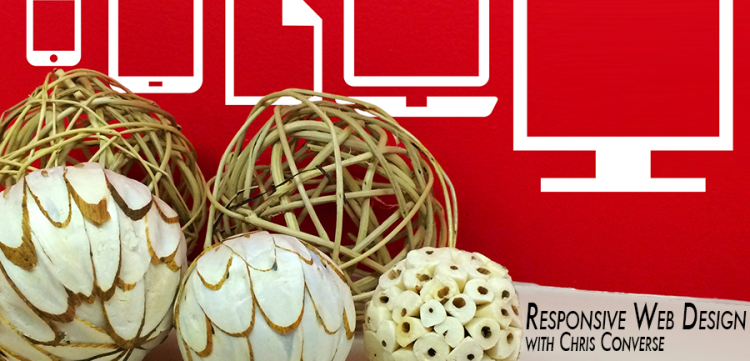It’s inevitable. Even if you’ve been a designer for years, you’ll encounter a client who isn’t satisfied with the work you deliver. It happens to everyone and, unfortunately, more than once. So it’s essential for the preservation of your reputation and your business to deal with it professionally.
First, and by far most important, is to not take it personally. Your work is not you—it is totally separate from you—and this concept can be hard to grasp when your confidence is low. But as much as it may sting, don’t interpret a client’s dissatisfaction as a personal insult. It may not even mean your work isn’t good—many clients can’t tell the difference between mediocre and excellent work.
What it does mean is that there was a disconnect between you and your client. When this happens, you need to resolve the problem with this client, either revising the work or parting ways, and make changes to prevent this from happening in the future—or at least reduce the possibility.
First let’s focus on this client. If necessary, start by saying to yourself, “If they’re not happy, it’s not personal. I time to think and I need more information to understand what’s going on.” You are well within your rights to ask for time to think or to talk with a colleague or mentor. Then, depending on the situation, you have a few options to choose from. Let’s look at each one closely:
1. Don’t revise the work. If you deliver the work and the client says, “This is not what we had in mind. We’re going to find another designer,” offer to do another revision, even if all your rounds of revisions are used up. But if they are looking for a way out, let them out.
Say this: “I’m sorry if you’re not happy with the work and I understand if you want to part ways. Best of luck to you in the future.”
However, if they ask for their deposit to be refunded, that’s where you draw the line, especially if they signed an agreement that protects you from this situation. (If they didn’t sign an agreement and pay a deposit up front, you have a bigger problem.) If they insist on a refund, talk to a lawyer. [Read more on the Marketing Mix Blog about how one of my clients handled this and what we learned.]
2. Revise the work for an additional fee. If you deliver the work and the client says, “We like it but our CEO wants to go in another direction,” that’s actually not a problem for you, at least, it shouldn’t be. In fact, things in the business world are constantly changing so this happens often. When the client changes the scope of a project, you should still be compensated for your work. You will, of course, be happy to provide an estimate for the new scope. You can even offer to slightly discount the second estimate because you’ve already done some of the upfront discovery. But it is up to you to make it clear that this is additional.
Say this: “What you’re asking for now is not included in our original agreement. I’d be happy to give you an estimate for the additional scope of work.”
3. Revise the work at no extra charge. If you deliver the work and the client says, “This isn’t working,” or something equally vague, your job is to diagnose the problem. You may need to help your client articulate what isn’t working. Be a detective and ask as many questions as you can so you can come up with a better solution—all without taking it personally.
If your first reaction is to be angry or defensive, wait until those feelings subside (you may need to sleep on it) then try one or all of these approaches until you get the information you need.
- Curiosity: Can you identify what aspects are and aren’t working? (Give them a few choices).
- Generosity: It seems like you’re having trouble articulating what’s not working. How can I help you convey what you’re thinking?
- Humility: I’m sorry to hear this isn’t what you had in mind. Let’s put our heads together and figure out where the problems are.
- Humor: Uh-oh—is this one of those “my wife doesn’t like red” situations?
Once the immediate situation is resolved, turn your attention to the bigger problem: making changes to your process to prevent this from happening again.
For example, you may need to fix your sales process so that you learn to recognize earlier the proverbial red flags, such as a negative, disrespectful attitude or stories about dissatisfaction with other designers.
Finding out at the very end of a project that you’ve taken the wrong direction or didn’t understand what they wanted means the problem to solve is in your process. You may need to get their—or their boss’—approval on initial concepts or comps, to make sure that you’re heading in the right direction in the first place.
Rest assured, this will happen to you, if it hasn’t already. So learning how to handle it is one of the best things you can do for yourself and your career in the long term.
Responsive Web Design

Web design requires the coordination of HTML, CSS, and graphics in order to construct a layout and design that can respond to the varying needs of your websites visitors. In this step-by-step course, we’ll cover every aspect of converting a design into a fully functioning web page. Register today.









Hi, the article is very timely, short and to the point. Thank you! I work in an ecommerce company and many of the same issues occur with internal client. Fortunately for me many of my colleagues are approachable. But still, we all have skin-in-the-game when comes to supporting directives from our executives and at times we designers need to divine what it is our marketing colleagues are trying to achieve.
Just one nit-pick… I would never, ever use that last bullet point. It would quickly be regarded as sexist when delivered by me. I would keep the humorous approach less personal.
Thanks again!